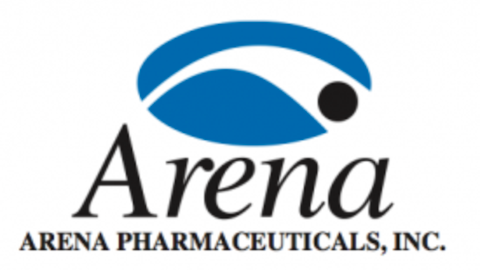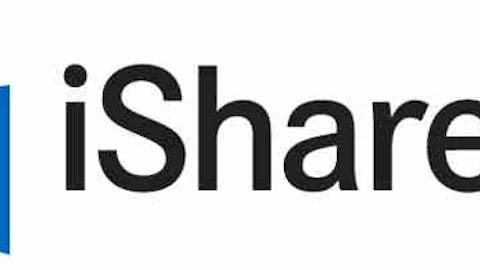Bexxar: GlaxoSmithKline plc (ADR) (NYSE:GSK) ‘s Bexxar is also an antibody linked to a radioactive isotope and was first approved by the Food and Drug Administration in 2003. Bexxar is targeted at CD20-positive, follicular NHL patients who are resistant to Rituxan and have relapsed following chemotherapy. However, like we saw with Rituxan, severe side effects can occur, including anaphylaxis, and no survival benefit has been clinically ascertained for those on the Bexxar therapeutic regimen, according to Bexxar’s own website.
Adcetris: Although Seattle Genetics, Inc. (NASDAQ:SGEN)‘ Adcetris is focused primarily on Hodgkin’s lymphoma, I figured it was worth mentioning since the FDA also approved it in August 2011 to treat a rare form of NHL known as systemic anaplastic large cell lymphoma, or ALCL. It is the only currently approved treatment specifically designed to treat ALCL. Of those ALCL patients treated with Adcetris in trials, 86% experienced a partial or complete response with a response average of 12.6 months.
Folotyn: Another quick mention here for Folotyn, a drug developed by Allos Therapeutics and inherited by Spectrum when it purchased Allos last year. Folotyn was approved by the FDA to treat a rare form of NHL known as peripheral T-cell lymphoma, or PTCL. Like Adcetris, it’s the only approved treatment for PTCL, which affects about 9,500 people annually.
Despite a landscape of improving survival rates, NHL trials haven’t always gone according to plan. One prime example of this is Cell Therapeutics Inc (NASDAQ:CTIC) whose drug, Pixuvri, for the treatment of relapsed or refractory aggressive B-cell NHL, was recently turned down by England’s governing medical body. Pixuvri has also failed on multiple occasions to be approved in the United States by the FDA.
What’s coming down the pipeline
Now that you have a better understanding of some of the key treatments in NHL, let’s have a look at a few promising treatments currently being tested in clinical trials. Keep in mind that with NHL being such a broad-reaching category, each of the following therapies may be very tightly defined with regard to its scope of treatment.
Ibrutinib: Currently being developed by Pharmacyclics, Inc. (NASDAQ:PCYC) and partnered up with Janssen Pharmaceuticals, a subsidiary of Johnson & Johnson (NYSE:JNJ), Ibrutinib is one of just a handful of drug hopefuls to receive the “breakthrough therapy” designation from the FDA. Being tested as a treatment for mantle cell lymphoma and chronic lymphocytic leukemia, ibrutinib has sailed through mid-stage trials thus far. In particular, ibrutinib induced a response rate in mantle cell lymphoma of 70% — the highest ever recorded in an MCL clinical trial. Early estimates by analysts put the peak sales potential as high as $5 billion.
Epratuzumab: This is an experimental anti-CD22 monoclonal antibody currently in phase 2 development by Immunomedics, Inc. (NASDAQ:IMMU) for the treatment of follicular lymphoma. In December 2010, Immunomedics presented its findings of epratuzumab in combination with Rituxan at the American Society of Hematology — and the results were encouraging. Of the 57 evaluable patients, 84.2% had an objective response rate, and 23 of 30 patients that achieved a partial response were still achieving that partial response after the nine month period of testing .
Obinutuzumab (GA101): Aside from being impossible to pronounce, this experimental late-stage drug from Roche has demonstrated significant promise in treating chronic lymphocytic leukemia. GA101 is being tested in three late-stage trials, and, according to an announcement in late January from Roche, it met its initial primary endpoint in the first of those three trials while offering an encouraging glimpse into its progression-free survival potential.
Your best investment
With so many subtypes of cancer comprising non-Hodgkin lymphoma, it appears obvious to me that research and investment dollars are going to soar, while big profits are likely heading in the direction of biotech and big pharma companies.
If you were looking for a riskier investment with great growth potential, that would be Pharmacyclics, Inc. (NASDAQ:PCYC). Understandably it’ll be sharing its Ibrutinib revenue stream with J&J assuming it gains FDA approval for CLL and MCL. The data would point toward a strong likelihood of that happening — as would its labeling as a breakthrough therapy — but the stock has already come so far, so fast, in the past four years that I’m not certain how much upside is left.
As for the most intricately tied investment, I’m going to side with Biogen Idec. Sure, Rituxan may have a slew of potentially nasty side effects — and I could very easily have chosen Roche, its co-owner, in this spot — but its positive effects for those who can tolerate the medication are undeniable. Given that Rituxan is combined with other existing and pipeline medications, I’d call it the safest play, and investment, in non-Hodgkin lymphoma. It also doesn’t hurt that Biogen Idec Inc. (NASDAQ:BIIB) recently boosted its product portfolio with a new multiple sclerosis drug, Tecfidera.
Stay tuned next week when we tackle the current and upcoming therapies for the treatment of thyroid cancer in this Tackling Cancer series.
The article Tackling Cancer: Non-Hodgkin Lymphoma’s Biggest Current & Upcoming Players originally appeared on Fool.com is written by Sean Williams.
Fool contributor Sean Williams has no material interest in any companies mentioned in this article. You can follow him on CAPS under the screen name TMFUltraLong, track every pick he makes under the screen name TrackUltraLong, and check him out on Twitter, where he goes by the handle @TMFUltraLong.The Motley Fool owns shares of, and recommends, Johnson & Johnson.
Copyright © 1995 – 2013 The Motley Fool, LLC. All rights reserved. The Motley Fool has a disclosure policy.


